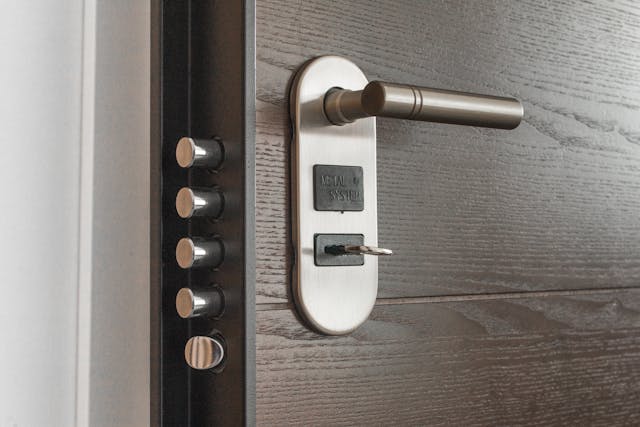Key Considerations Before Workplace Access System Installation
Managing personnel flow and improving security in the workplace is essential. A way to achieve this is by installing an access control system.
There are a few important things to think about before committing to make sure the system fits the unique requirements of your company. This guide explores the important considerations to make before putting in place a workplace access system.
What is an Access System?
An access system controls who can enter or use resources in a specific area. This could be a workplace entrance, a scientific laboratory or offices and is vital to safeguard important.
It protects both digital and physical assets by combining hardware, like card readers and biometric scanners, with software that controls and records entries.
What Should You Consider Before Installing an Access System?
While access systems offer a great amount of benefits for operations, it’s essential to determine whether it is a smart business move. Before making any rash decision, consider the following:
Security Requirements
Understanding your security needs is essential before selecting an access system. Think about how sensitive the areas are where you work. Should employees have varying levels of access based on their positions and responsibilities, or do they all need the same level of access?
Whether you choose basic card access or complex biometric options, choosing the right system is essential for optimal results.
Licencing and Permissions
Installing access control systems requires permits for physical installations, software licenses for management software, and HID Global licenses for integrating HID mobile credentials. Compliance with data protection laws, such as GDPR, is vital and should not go unspoken.
System Compatibility and Integration
The new access control system should ideally integrate seamlessly with your existing security infrastructure. Check the compatibility with current security technologies such as CCTV, alarm systems, and other monitoring tools.
Integration enhances security management, allowing for a comprehensive, unified approach to security protocols. It also simplifies operations, making it easier to manage multiple security measures through a single interface.
Scalability of the System
As business needs evolve, so will your access system. Consider the future growth of your company. Will the system be able to handle additional users, doors, and areas as your business expands? Opting for a scalable system from the start can save significant time and expense compared to needing to replace or extensively upgrade the system in a few years.
User Experience
While security is essential, the system should not hinder the daily activities of your staff. It should be user-friendly, ensuring that employees can easily adapt without frustration.
An overly complicated system can lead to non-compliance or attempts to bypass the system, thereby undermining its effectiveness. Ease of use for both regular users and administrators who manage the system is an important consideration.
The Impact on Business Operations
Installation of an access control system can disrupt normal business operations. Plan the timing and process of the installation to minimise its impact. Consider how long the system will take to install and whether parts of your premises will need to be inaccessible during this time.
It may be necessary to schedule installation during downtime or outside of regular business hours to ensure minimal disruption to your operations.
Ongoing Maintenance and Support
Evaluate the maintenance requirements and the support services offered by the system provider. Reliable support and maintenance are crucial to ensure the system functions optimally and security risks are minimised.
Understand the terms of service, including response times in case of failures, availability of technical support, and the costs involved with repairs and maintenance. Regular updates and checks should be part of the service agreement to keep the system effective and secure.
Overall Costs
Finally, consider the financial implications of installing an access control system. This includes upfront costs for hardware and installation, ongoing expenses for maintenance and updates, and potential costs for scaling up the system.
Budget accordingly, keeping in mind that investing in a slightly more expensive system might provide better value in the long run due to lower maintenance costs and greater scalability.
Install Access Systems for Improved Business Operations
Installing a workplace access system is a decision that should be approached with thorough planning and consideration of these key factors.
By carefully evaluating your security needs, system compatibility, scalability, user experience, impact on operations, maintenance support, and costs, you can choose a system that not only secures your workplace effectively but also supports smooth and efficient business operations.

